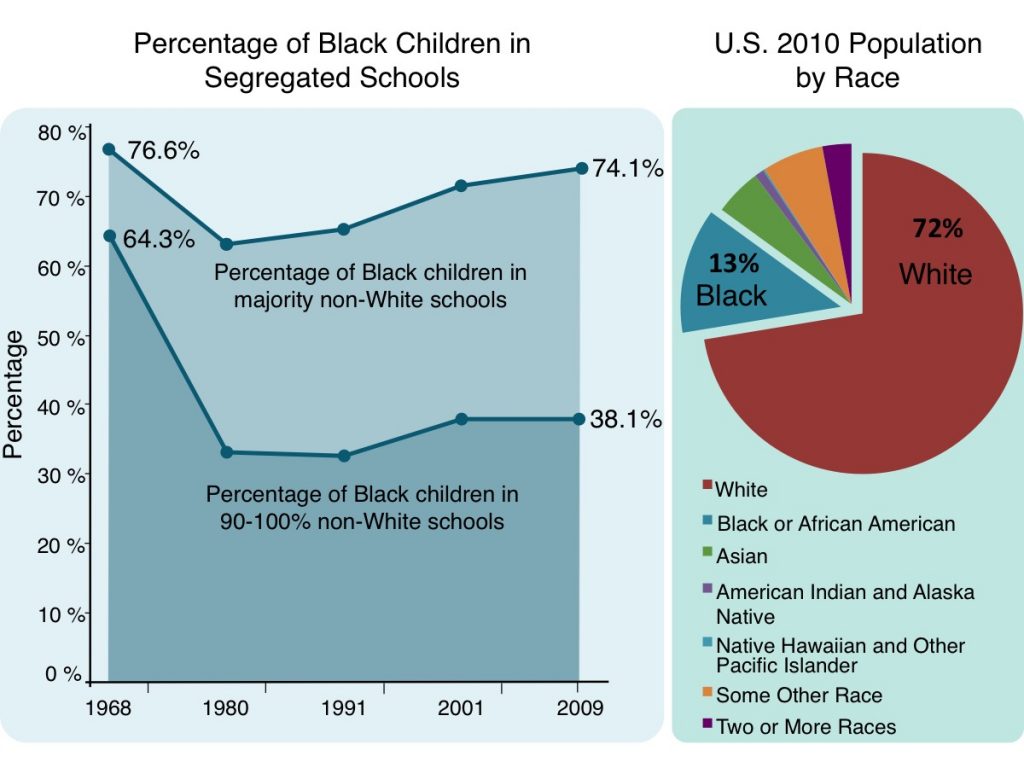
Another example of inequities that still exist today is racially segregated schools. Even though schools were desegregated in the 1960s, many, many schools remain racially segregated to this day. The graph on the left plots the percentage of Black children in racially segregated schools. The percentage of Black children is on the vertical axis. The years between 1968 and 2009 are on the horizontal axis. Look at the top line. This shows the percentage of Black children who go to schools where the majority of children are non-White. In 2009, 3 out of every 4 Black children attended schools that were mostly non-White. Of those children, over half attend schools that are over 90% non-White.
The high percentage of Black children in schools where the majority of students are non-White is striking. If schools were truly integrated, we would expect that almost no Black children would attend segregated schools. Look at the pie chart on the right. In 2010, White Americans made up 72% of the population. Black or African Americans made up only 13% of the population. Because the White population is so much larger, we would expect that Black children would most often attend schools that are majority White. Instead, 74.1% of Black children in the U.S. attend schools where most of the children are non-White. This means that a large number of schools are still racially segregated. What’s more, schools usually teach children from the surrounding neighborhood. So these data also give us a glimpse of the ongoing racial segregation in our neighborhoods, cities and towns.
The good news is we can contribute to reducing these inequalities. Talking with children about race and racism, in a developmentally appropriate way, is a good place to start.
-
- Bias
- the belief that some people or ideas are better than others, usually resulting in unfair treatment
- Biological race
- physical racial features such as skin color, hair textures, and facial features
- Explicit racism/bias
- racism that is plainly expressed through words and or actions
- Implicit racism/bias
- racism that hides in our unconscious biases and gets expressed in our actions
- Racism
- the beliefs and practices that uphold and reinforce inequalities based on race
- Social identity
- a person’s sense of self that is based on group membership
- Social race
- The social norms, attitudes, beliefs and behaviors that accompany racial groups
- Systemic racism
- policies, practices, and laws that reinforce social inequalities by discriminating against groups of people, either directly or indirectly, and limiting their rights